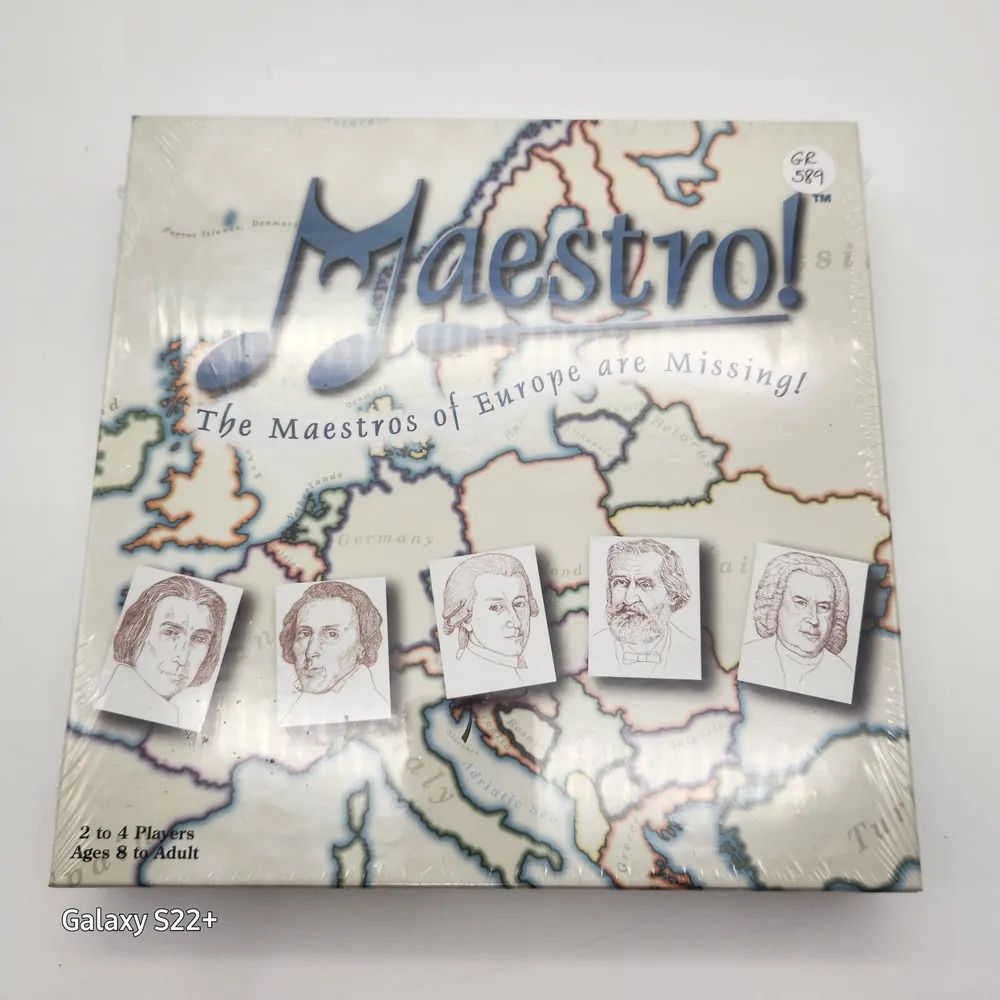Maestro (1989)
Maestro
Maestro is a board game that was originally conceived and developed by Dr. Steve Lisberger in the 1990s. The game has evolved over the years to take advantage of performance improvements in computer workstations and their operating systems, as well as to introduce new functional features and replace outdated legacy hardware. The game has been popular for its integration of various learning areas, such as history, geography, composer biographies, and strategy.
Why is Maestro Popular?
Maestro is a popular game because it combines learning with entertainment. Players can enjoy the game while also learning about different composers, their lives, and their music. The game has been well-received for its educational value and engaging gameplay.
Game Components of Maestro
How To Setup Maestro
To set up Maestro, players first place the game board in the middle of the playing area. Each player selects their tokens and places them on the starting positions on the board. The musicians, which are the main game pieces, are shuffled and distributed according to the instructions. The orchestras are set up on the board, each with a specific size and musician requirements.
Gameplay Mechanics and Game Objective
Player Experience
Maestro is a game that balances fun and skill, making it an enjoyable yet challenging experience. Players must strategically manage their musicians to fill the orchestras efficiently. The game received positive reviews, with Brian Walker from *Games International* magazine giving it 3 1/2 stars out of 5, praising its fun and skilful gameplay.
Pros
Cons
Personal Thoughts on Maestro
Maestro is a great game for those who enjoy light to medium complexity games with a touch of strategy. It is ideal for families or casual gamers looking for a fun, quick game. The game’s theme of managing musicians and filling orchestras adds a unique and engaging twist, making it a good addition to any board game collection. However, it may not be the best choice for gamers seeking long, complex sessions or high replayability.
We are supported by our audience. When you purchase through links on our site, we may earn an affiliate commission, at no extra cost for you. Learn more.

